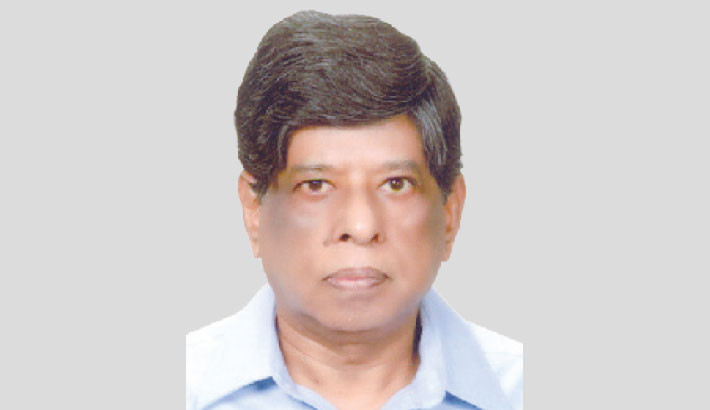
The prime objective of the Paris Agreement (PA) adopted in 2015 was to control the temperature within 1.5 to 2.0 degrees Celsius above the pre-industrial level. That is why each country under the PA submitted an up-to-date document on GHG (greenhouse gas) emissions from different sources along with roadmaps and action plans for mitigation practices and adaptation strategies to the UNFCCC (United Nations Framework Convention on Climate Change). This document was referred to as the Intended Nationally Determined Commitment (INDC). The INDC considered three sectors (power, industry, and transport) as a source of emission, aiming for a 55% unconditional reduction in GHG emissions from the ‘Business as Usual’ (BAU) scenario by 2030 and a further 10% conditional reduction with international community support, taking 2011 as the base year.
The up-to-date version of INDC is called nationally determined contribution (NDC) and has identified the GHG sources as Energy (industry, transportation, commercial, mechanised part of agriculture, brick kilns, fugitive, F-gases), IPPU (industrial power and process use), AFOLU (agriculture, forestry, and other land use), and Waste.
In 2012, regarded as the base year, the total amount of estimated greenhouse gas emissions was 169.5 million metric tonnes of carbon equivalent (MtCO2e). The energy sector was responsible for 93.09 MtCO2e, or 55.07 per cent, of the total emissions, with AFOLU emissions coming in second. AFLOU produced 45.87 MtCO2e, or 27.13 per cent, of emissions. The sectors of Waste and IPPU came after them. Emissions from IPPU and Waste were 5.61 and 24.11 MtCO2e, which corresponded to 3.32 and 14.26 per cent, respectively. Because the forest simultaneously emits and absorbs, the emission estimates for forestry were somewhat different from those for the other sub-sectors. However, the ability of a crop to sequester carbon was not considered. In any case, the anticipated removal was 0.87 MtCO2e per year, whereas the emission quantity from the forest was 1.19 MtCO2e annually. Therefore, the annual net emission was 0.37 MtCO2e (0.22 per cent). Based on the average from 2000 to 2015, those were the Forest Reference Levels (FRL). This estimation was executed as per IPCC recommendations.
The industrialised nations' divergent perspectives and little public awareness have resulted in limited progress in reducing greenhouse gas emissions. Accordingly, GHG emissions will reach 409.4 MtCO2e by 2030, 2.42 times higher than the base year, assuming the current economic trajectory and the Business-as-Usual scenario (BAU). Just the energy sector will be responsible for 312.54 MtCO2 (76.34 per cent) of the total emissions. The anticipated emissions from AFLOU and IPPU are 55.01 MtCO2e (13.44 per cent) and 10.97 MtCO2e (2.68 per cent), respectively. Waste-related emissions will rise to 30.89 MtCO2e. As in the base year, the energy sector will be responsible for most emissions. Agricultural emissions were estimated for two sectors. The emissions from mechanised cultivation are shown under the Energy sector and the absolute crop husbandry under AFOLU sector. The amount of emission from mechanised cultivation in the base year was 2.73 MtCO2e, and in 2030 it will be 10.16 MtCO2e, respectively. The corresponding percentages were 1.61 and 2.48.
The governments had to commit to reducing GHG emissions as per their capabilities through two scenarios: unconditional and conditional. For the unconditional scenario, the measurements should be taken from the Bangladesh government of his own. The conditional scenario is based on external assistance, both financial and technical. As per the unconditional commitment, the government must reduce 27.56 MtCO2e (6.73 per cent) below the BAU level. The lion’s share is from the Energy sector, i.e., 95.4 per cent (26.3 MtCO2e). In contrast, the shares for AFLOU and Waste were 0.64 MtCO2e (2.3 per cent) and 0.6 MtCO2e (2.2 per cent), respectively. There was no commitment to IPPU for the Unconditional scenario. As per the Conditional scenario, the government committed to reduce 61.9 MtCO2e (15.12 per cent) GHG emissions below the BAU level by 2030. Of course, the share of Energy was the highest at 96.46 per cent (59.7 MtCO2e). These amounts for AFLOU and Waste were 0.4 MtCO2e (0.65 per cent) and 1.84 MtCO2e (2.97 percent), respectively. As before, there was no commitment for IPPU.
The Energy sector is expected to be the largest contributor to GHG emissions by 2030, followed by AFLOU. The Energy sector is 3.34 times more polluting than AFLOU. Experts are considering these sectors, and rice production is a major contributor to greenhouse gas emissions. Mitigation efforts include the extension of AWD technology to 50,000 and 100,000 hectares, by 2030 through Unconditional and Conditional scenarios, respectively. Here is a commitment for varietal improvement of 1,111, 000 hectare in the unconditional scenario and 2,129,000 hectare in the Conditional scenario.
AWD technology is available to reduce methane emissions in rice, but its acceptance is limited. The low methane emitting high-yielding variety (HYV) has not yet been developed. The best option is to use the spill-over benefit of on-going HYV technology, grow some HYVs as dry-direct-seeded rice in pockets, and use leaf colour charts and deep placement of guti urea to reduce nitrous oxide emissions. Pulse crops can also be included in the rice cropping system to reduce greenhouse gas emissions. Other upland crops may be best suited for the farming system.
Livestock data on GHG emissions is too limited, but efforts are on-going to replace domestic cattle with crossbreed productive ones with low methane emissions. High-yielding cows or fattening bulls emit more methane as they eat more. Research suggests reducing methane emissions through food composition, but time is limited to achieve a satisfactory impact by 2030.
The Bangladesh government is addressing global warming through various projects, focusing on public awareness to achieve the NDC commitment to the UNFCCC by 2030. IFAD is intended to support the government’s efforts, providing field data collection and general information to researchers, and assisting in achieving these goals.
_________________________________________
The writer is a Senior Consultant of IFAD, former Director General of BRRI and former Executive Director of KGF

